Tag: Bodybuilding
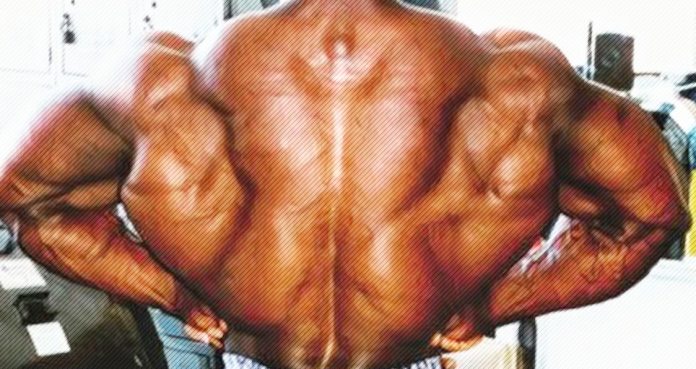
3 Exercises That Will Get You Wide-Ass Lats
Working the Opposite.
There’s a real science to bodybuilding that the average person will never understand. There’s more to molding and shaping a form you can be proud of by just simply doing a few sets of curls or hitting the bench. It’s a process that requires a person to know how the human body works – in particular, and this is most important, how their body works. As bodybuilder you come to understand that the only person who’s going to know what’s best for your development is you.
What’s also true is that sometimes building up one part of the body can ultimately improve another muscle group as well. There are plenty of guys who focus all their attention on one muscle group to the point that other parts of their body is under developed. The key to making an aesthetic physical form is by not only working out the muscle group that you wish to improve, but the antagonizing muscles as well.
What’s an antagonizing muscle? Well, it’s the opposite muscle group to the one that you may be working on, the easiest example being the triceps versus the biceps. Shaping one or the other is great, but shaping the whole thing brings the package together.
In terms of building up muscle groups there’s no doubt that the chest is one of the biggest body parts that are attacked by men. Having a strong and developed chest is the dream of most any man out there and it’s the reason so many beginners target them frequently. But if you desire a great chest then you’re going to have to work your antagonizing muscles as well.
The lats can make your form look extremely impressive if you give them the proper attention. When you have wide lats it’s hard to be ignored and it gives your physique an even more domineering appearance. Check out some of these exercises to get some massive lats to compliment the rest of your form.
Seated Cable Row
A great exercise that holds a number of benefits, the seated cable row is an exercise that give you some great development. The movement of this exercise allows for improvement in the upper, middle, lower, and outer parts of the back. It’s definitely an exercise that should be apart of your back day routine.
Lat Pulldowns
This is a great exercise to isolate the lat muscles for some very specific development. The lat pull down is very similar to the wide grip pull up but the fundamental difference is that the body remains stationary. This allows for the user to emphasize the lats specifically.
Wide Grip Pull Ups
This is often compared to the lat pull down, seeing as how they both work the outer lat muscles, but there’s a major difference – where the lat pull down is stationary and focuses solely on the lat muscle, the wide grip pull ups not only improve your outer lat development, but your overall strength as well. It’s great for giving you functional strength along with working your back.
What’s your favorite back exercise? Let us know in the comments below and be sure to follow Generation Iron on Facebook and Twitter.
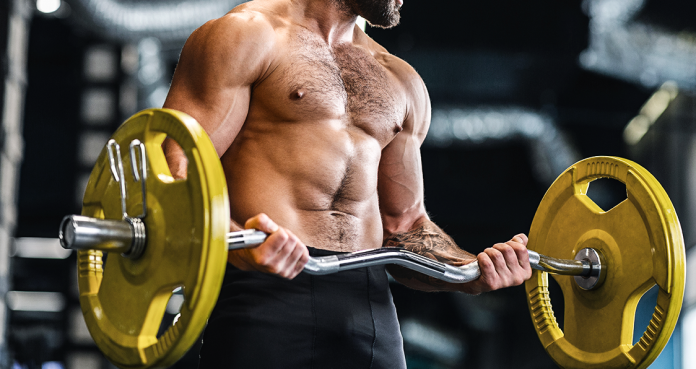
5 Training Tips For Massive Muscle Growth
The goal is growth. And we’re here to help.
Many bodybuilders spend so much time in the gym but just don’t get the kind of results they want. Sure, they start seeing some growth – but not serious muscle growth. So they spend even more time in the gym – racking up the hours hoping to make some serious gains. But still nothing. Why?
We’re here to help. Below you will find five tips to help increase your muscle growth that you may be overlooking.
Big Compound Lifts
Compound exercises are great for building overall muscle size – as they hit multiple muscles in a body part at once. This is especially important during the off season – where your goal is to bulk up as much as possible.
Be warned, compound exercises will increase muscle mass for your stronger muscles – but the weaker ones in a muscle group will need to later be focused on by isolating them. This is the only way to maximize your physique at every inch of your body. Don’t ignore the isolation work.
Boost Your 1 Rep Max
This is a quick little technique that help track your progress as well as give you a more physical idea of whether or not your workout is effective. Every so often put on as much weight on an exercise as possible and see what your max rep is. This number should increase as the weeks of lifting go by. If you’re not seeing a significant increase, then you know you have to start working harder.
Perform Dropsets
After you pull off some heavy lifting for one exercise – naturally you’ll move onto the next one, right? Wrong. If you want to get some major gains, try lightening the load around 15% and try to lift another three sets. If you’re feeling really good during these reps, do all three. If you are feeling weak and tired, just keep it to one set or two. This will do wonders for adding volume.
Don’t Over Train
More weight lifting does not always mean better – we’re talking about daily here. While old school magazines and interviews would always talk about how the pros would hit the gym for 4-5 hours a day – this will not double your gains.
The same goes for your rest days. Skipping out on a rest day to get more lifting in does more harm than good. Think of it like drinking alcohol. You have a few beers and you start to feel good – but if you keep drinking eventually you are just sick with vomit all over the floor. Work hard – but in moderation.
Low Intensity Cardio
This might be an obvious one – but you’d be surprised how many people ignore this aspect of bodybuilding. Low intensity cardio provides two things for bodybuilders. The first is that it keeps fat at bay without cutting down on muscle size. The second, and less recognized aspect, is that it strengthens your vascular network.
Why is this important? Because your blood and veins are what transport all of that protein you’ve been consuming to the rest of your body. The stronger your vascular network is the more effect your body will provide your muscles with the protein it needs to rebuild and go stronger. So don’t skip out on the cardio.
That’s about it. Try some of these training tips when the off season kicks in to see if you can get some improvements in bulking up. Have any other tips for us? Let us know in the comments section below and make sure to comment on our Facebook and Twitter pages as well!
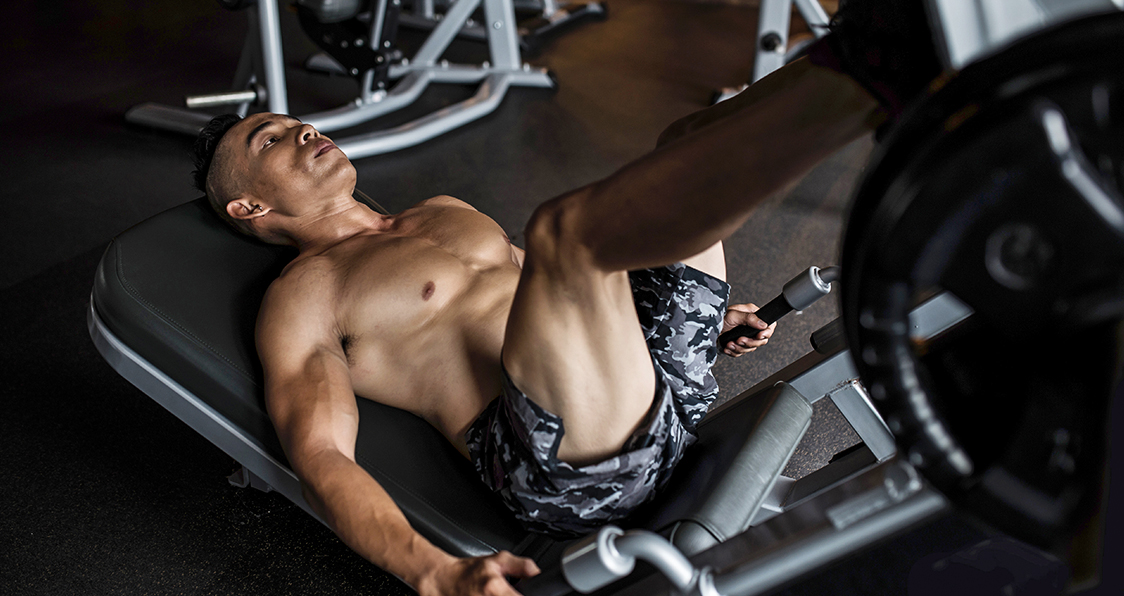
6 Most Common Leg Press Mistakes Everyone Makes – Including You
Leg Press Mistakes You Need To Stop Making
For many people, their self-respect is directly proportional to the amount of weight they can lift. Gym bros try to outdo each other by competing against one another in the gym, and the leg press is usually at the center of the abuse.
Although the leg press is a fairly easy exercise, many people still manage to screw it up. Our goal with this article is not to shame anyone. We’re listing out the mistakes so that other people can learn from them and avoid injury.
Going Too Heavy
We propose a strict ego-test before anyone can get onto the leg press machine. We don’t mean it figuratively, we literally want someone to question the lifter about his PR on the squat and deadlift before he can put on more than four plates on the machine.
The ego-lifters move the sled a couple of inches every rep before calling it a set. If you’re not able to maintain a complete range of motion (thighs touching the torso), you’d be better of lowering the weights.
Using Arms
Most people spot themselves by pushing their legs with their hands. The self-spot is acceptable if you’re training for failure and need a little assistance towards the end of the set. But if you need to push through your arms from the first rep, you have some soul searching to do.
On the other hand, some people leave a lot of gains on the table by raising their arms in the air or crossing them over their chest. Holding onto the sidebars or the pads can help you in generating thoracic pressure and keeping your core tight.
Lower Back
Some people make the mistake of lifting off their lower back from the pad. After your legs, your lower back is the muscle that is put under the most stress while performing the leg press.
If you feel pain or stress in your lower back while performing the exercise, you need to fix your posture. You can try adjusting the angle of the pad if you don’t see relief after making sure your lower back is not elevated.
Feet Placement
It’s not uncommon to see people performing the exercise with a messed up feet placement. In a normal stance, your feet should be placed at a shoulder-width on the platform. Your toes should be pointing out slightly (11 and 1 o’clock).
If you’re targeting the inner sweep of the quads, your feet will be wider than shoulder-width and the toes will be pointing farther outwards. And while training the outer sweep, your toes will be placed parallel and next to each other.
Knee Movement
Performing the leg press correctly requires you to learn the proper technique. While lowering the sled, your knees shouldn’t fold-in. You need to push-out your knees as you bring them closer to your chest.
In an orthodox position, your legs should be at the sides of your torso at the bottom of the movement. You also need to make sure your heels don’t come off the platform as you lower it down.
Back Placed Flat Against The Pad
This can get a little confusing as we just told you that your lower back shouldn’t be elevated. Remember – while, your upper and lower back should be placed against the pad, your mid-back should be slightly elevated.
You should maintain a big-enough arch so that your hand could pass between the pad and your back. Placing your mid-back on the pad will put unnecessary tension on your back and you won’t be able to maintain a full range of motion.
Which is your favorite exercise?
Let us know in the comments below. Also, be sure to follow Generation Iron on Facebook and Twitter.
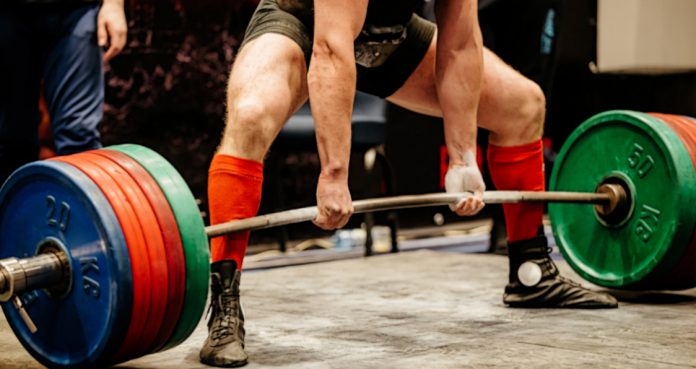
6 Cues For Improving Your Sumo Deadlift
Understanding The Sumo
The deadlift is a superb compound exercise that targets a vast number of muscle groups the length and breadth of the body. It is specifically well renowned for its ability to build strength and size in the posterior chain. The posterior chain consists of all muscles located at the rear of the body – from the base of the heel right through to the base of the head.
However, not only will regular deadlifting develop the posterior chain, but it also improves the strength of a number of anterior muscles, core and grip strength. These improvements may, in turn, lead to an improved posture, enhanced performance, and reduced risk of injury (1).
The Differences Between The Sumo and Conventional Deadlift
There are an array of deadlift variations that can be performed for a number of different goals. One of the most popular deadlift variations is the sumo deadlift. The exercise involves a wide stance and narrow grip which places the trunk in a more vertical position – similar to the position you would expect in a squat. Compare this to the conventional deadlift where a narrower stance and wider grip puts the trunk in a horizontal position, almost parallel to the floor.
The difference in form and execution between the two variations slightly alters the demands placed on the body. The conventional deadlift tends to place a greater demand on the spinal erectors due to a greater trunk lean. While both exercises place a similar demand on the hips, the upright trunk in the sumo deadlift decreases the demand on the spinal erectors, moving it to the quadriceps (2).
Studies have suggested that you are less likely to sustain injury while performing the sumo deadlift in comparison to the conventional. This is due to the trunk position of both. The upright sumo trunk position appears to reduce the shear force running through the lower spine thus reducing the risk of sustaining a spinal injury (3).
Studies have indicated that during the conventional deadlift, the lifter must complete 25-40% more mechanical work in comparison to the sumo (4). The wider stance in the sumo deadlift reduces the range of motion (the distance the bar has to travel from the floor to the hips). A narrow stance meanwhile, requires a greater ROM and therefore you can reasonably expect to lift a greater load with the sumo in comparison to the conventional.
Finally, for many lifters, the sumo stance will be an easier position to assume as it does not require the same degree of ankle and spinal mobility as the conventional. Hip anatomy and physical characteristics may also dictate which method one finds most suitable. Lifters with long limbs tend to be at a mechanical advantage when performing the conventional deadlift in comparison to those with short limbs.
Cues For A Powerful Sumo Deadlift
Cues are powerful tools that can be utilized to reinforce technique both before and during a lift. Cues are typically short phrases that will remind an individual of the key points and requirements to effectively complete the exercise.
In order to prepare yourself and execute the perfect sumo deadlift, run through and repeat the following 6 cues. As you will go on to see, cues 1-3 relate to taking up the correct position and facilitating good form while cues 4-6 relate to the drive and execution of the deadlift.
1. ”Take Your Stance”
The first thing to ensure prior to lifting the bar is our foot position. As stated, the correct stance should be wider than the hips. The width that you place the feet is often dependant on your physical attributes however, be aware that an extremely wide stance may make it more challenging to get the barbell moving off the floor.
A moderate sumo stance, where the feet are slightly outside the hips, is more than likely enough for the vast majority of lifters. However, those who carry a great deal of mass may find that they have to adopt an even wider stance to safely get into the correct position. There is a simple way to assess whether or not your stance is appropriate. When setting up, have a look at where your knees are in relation to your ankles. Ideally, look to get the knees directly above the ankles.
2. “Toes Out”
Once the correct width of the stance has been determined, it’s important to turn the toes out. In a conventional deadlift, an analysis confirmed that the toes will be turned out typically around 10-15°, whereas the sumo requires a larger degree of external rotation – around 40-45° (5)
The purpose of this is two-fold; firstly, it will move the knees and shins out of the path of the bar. By failing to point the toes or point them too far out, it may be difficult to keep the bar tight to the body. As a result, the barbell will not move in an efficient path from the floor to the hips resulting in energy being wasted and a poor lift. Secondly, for a safe sumo deadlift, look to keep the knees over the ankles and especially prevent them from folding inward. Pointing the toes will allow you to push the knees out to a greater degree when driving the barbell of the floor.
3. “Line The Hips With The Bar”
Unlike the conventional deadlift set-up where the hips are elevated above the knees, the sumo variation demands that the hips are roughly in line with the bar. If the sumo deadlift is new to you, this may mean dropping the hips significantly lower than you are used to. Ultimately, mobility and limb length will dictate your final depth, however, it is still important to drop the hips down toward the floor. When dropping the hips don’t allow the knees to come forward as this may push the bar further away from the body and interfere with the consequent bar path.
To measure whether or not you have assumed the best position, drop the hips down and have a look at your spinal alignment. Find the point where you are at maximal depth while maintaining a flat back and tension in the hamstrings. If you drop too deep you will see your back begin to round. If the set-up is correct, the degree of leverage will improve and thus enhance the efficiency of the lift.
4. “Get Behind The Bar”
Now that the stance has been taken care of, it’s time to get the bar moving. As you powerfully drive, it’s important to keep behind the bar. Failure to do this may bring the bodyweight over the top of the bar which will, once again, have a negative impact on the bar path. Additionally, you may find it more challenging to lock out if you position yourself in front of the bar.
One simple way of ensuring you do this is to ensure you are pushing hard through the heels at all times – not the mid or front foot. Furthermore, prior to lifting, think about pulling yourself down into the bar, rather than simply dropping down and grabbing the bar. By pulling yourself into the bar, your lats will engage which will prevent any rounding of the spine and ensure the hips do not shoot up too quickly.
5. “Push The Floor Away”
This is an excellent cue for maintaining tension in the hips and will ultimately assist in shifting the bar from the floor. With the sumo, getting the bar moving from static is extremely challenging and therefore, by visualizing pushing the floor away with the feet, it is possible to effectively generate power through the hips to drive the bar off the floor. Furthermore, this cue is useful for forcing the knees out as the bar moves up the body. This will ensure that the knees stay out of the way of the bar thus facilitating a more efficient bar path.
6. “Drive The Hips Into The Bar”
Very often with the deadlift, individuals will make a mistake with the lock-out. It tends to go one of two ways – either they fail to drive the hips into the bar entirely or they will overextend and begin to arch the spine. To successful finish off a deadlift, you must stand fully upright, with knees and hips locked out – this means driving the hips into the bar (without overextending!)
Focus on squeezing your glutes together at the top of the movement as this will push your hips through to a natural end position while avoiding overextension. Doing this will not only have a positive impact on your lift efficiency but will also protect your lower back.
Sample Deadlift Program
Day 1 (Max)
Exercise
Training Information
Sumo or Conventional Deadlift
Work up to a maximal single (90% of 1RM)
Sumo Block Deadlift
3 x 3
Lower Accessory Exercises
Target Muscle Groups:Glutes, Hamstrings, Quads, Abs
Day 2 (Dynamic)
Exercise
Training Information
Banded Box Squats
10 x 2 (60% of 1RM)
Sumo Deadlift (w/ chains)
6 x 2 (50% of 1RM)2 x 2 (65% of 1RM)
Lower Accessory Exercises
Target Muscle Groups:Glutes, Hamstrings, Quads, Abs
Day 3 (Volume)
Exercise
Training Information
Sumo or Conventional Deadlift
5 x 3
Sumo Deficit Deadlift
4 x 6
Stiff Leg Deadlift
3 x 10
Final Word
There is no doubt that incorporating the sumo deadlift into your program can have a substantial impact on your conventional deadlift (and vice versa). It may take some time to perfect the technique, but once you do, you’ll soon find that it advances you beyond any existing plateau and leads to incredible strength gains.
For more news and updates, follow Generation Iron on Facebook, Twitter, and Instagram.
References:
1- “Deadlift Technique and Teaching Points | AFA Blog”. Australian Fitness Academy. January 18, 2017.
2- Escamilla, Rafael F.; Francisco, Anthony C.; Kayes, Andrew V.; Speer, Kevin P.; Moorman, Claude T. (2002-4). “An electromyographic analysis of sumo and conventional style deadlifts”. Medicine and Science in Sports and Exercise. 34 (4): 682–688. ISSN 0195-9131. PMID 11932579.
3- Cholewicki, J.; McGill, S. M.; Norman, R. W. (1991-10). “Lumbar spine loads during the lifting of extremely heavy weights”. Medicine and Science in Sports and Exercise. 23 (10): 1179–1186. ISSN 0195-9131. PMID 1758295.
4- Escamilla, R. F.; Francisco, A. C.; Fleisig, G. S.; Barrentine, S. W.; Welch, C. M.; Kayes, A. V.; Speer, K. P.; Andrews, J. R. (2000-7). “A three-dimensional biomechanical analysis of sumo and conventional style deadlifts”. Medicine and Science in Sports and Exercise. 32 (7): 1265–1275. ISSN 0195-9131. PMID 10912892.
5- Kompf, Justin; Arandjelović, Ognjen (2017). “The Sticking Point in the Bench Press, the Squat, and the Deadlift: Similarities and Differences, and Their Significance for Research and Practice.” Sports Medicine (Auckland, N.z.). 47 (4): 631–640. doi:10.1007/s40279-016-0615-9. ISSN 0112-1642. PMC PMCPMC5357260. PMID 27600146.
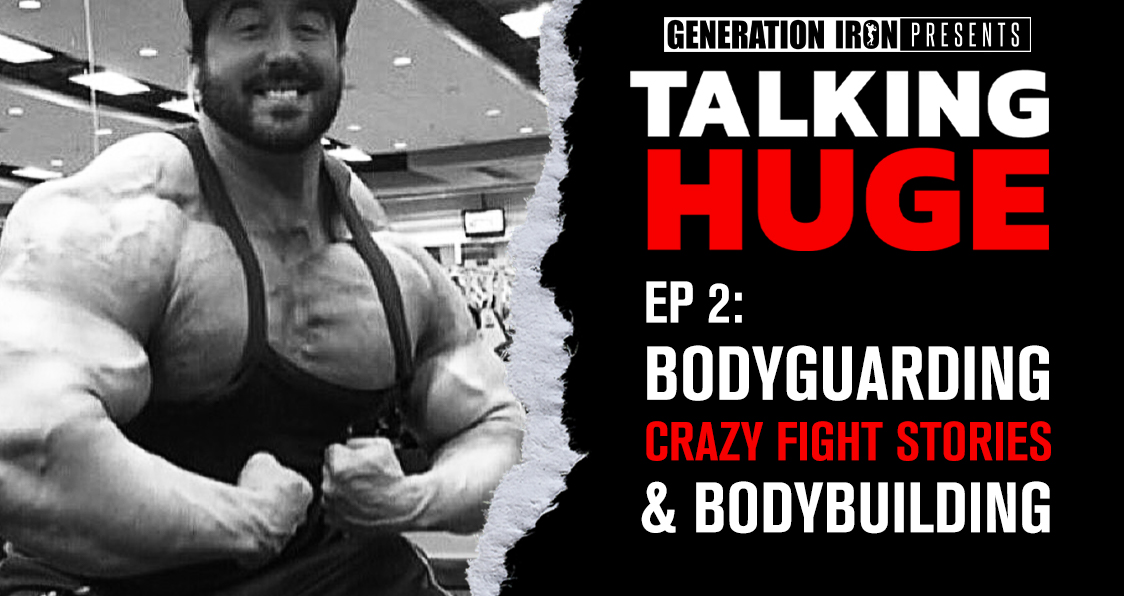
Talking Huge With Craig Golias | EP 2: Bodyguarding, Crazy Fight Stories, & Bodybuilding
[embedded content]
Craig Golias and Vlad Yudin discuss Logan Paul vs Floyd Mayweather, crazy bodyguard stories, social media & bodybuilding, and how pro bodybuilding is the hardest sport of them all.
Welcome to another episode of Talking Huge – a weekly digital series in which Craig Golias talks in-depth with Vlad Yudin on the latest trending topics in bodybuilding. Raw, honest, and uncut – Craig Golias shares his opinions on all things bodybuilding. In this episode, Craig Golias talks about how the Logan Paul boxing match was boring, his craziest bodyguard stories, and how social media ruined the sport of bodybuilding.
Craig Golias has had quite the rollercoaster of a career. Before becoming a bodybuilder he was a male stripper and a bodyguard. This led to a large variety of crazy and entertaining stories. Some of which Craig discusses in this episode. He was also a competitive bodybuilder before hanging up the towel and focusing on his brand and being an influencer. He shares some stories from his competitive days and why he decided to step down.
He also shares his opinion on how social media affected the sport of bodybuilding. Social media has certainly benefited Craig – but he thinks it has ruined the sport for pure competitive athletes. He also comments about the hardest parts about competitive bodybuilding – stating that it’s the hardest sport in the world.
Logan Paul Vs Floyd Mayweather – “It Was Boring”
Craig Golias and Vlad Yudin’s conversation in this episode came straight off the heels of the much hyped and controversial Logan Paul vs Floyd Mayweather boxing match. Ultimately, Logan Paul lasted the entire match against Mayweather. No knockout occurred. This was a good look for Logan Paul – who was going up against one of the greatest boxers in recent memory.
But to Craig Golias, the boxing match was boring. Because there was no knockout – the fight pretty much slugged along. As far as boxing matches go – Craig found it pretty uneventful. If it weren’t for the two names being so massively popular, this would be a boxing match unremembered.
Vlad Yudin asks Craig if he would ever step in the ring for an exhibition match. Perhaps for charity. Craig Golias admits he’s not much of a fighter – and prefers to stay out of combat. Vlad then asked him theoretically who would be the best opponent for him in the ring. Craig jokes that Big Ramy would be the ultimate opponent. Both of them are sponsored by Enhanced Labs. Both of them are mass monsters. Who would win? Sadly, it will simply be left to the imagination.
Craig Golias’ Bodyguard Stories
Craig Golias also talks about his time as a bodyguard before he was full fledged into bodybuilding. He tells one of the craziest stories from his time as a bodyguard. He was guarding a drug addict who ultimately tried to stiff paying Craig. This caused Craig to loose his patience and wrap his hands around the man’s throat. He was in a popular spot in Las Vegas.
Ultimately, his friends convinced him that it wasn’t worth going to jail over. So he let the man go. Craig claims that he did ultimately follow up with the drug addict and get his fair pay for bodyguarding. Craig Golias’ lesson for others? Make sure to always get paid up front and don’t work with drug addicts.
Bodybuilding Is The Hardest Sport In The World… And Social Media Ruined It
Craig Golias also talks with Vlad Yudin about his years as a competitive bodybuilder. He ultimately stepped down because he didn’t enjoy the back and forth of bulking and then shredding. He also claims that bodybuilding is the hardest sport of them all – above all other major pro sports. He thinks the focus and dedication to transform your body to champion status requires more work than any other sport.
Craig Golias also believes that social media has completely ruined the sport of bodybuilding. He admits that he favors from this shift. Since he no longer competes – he uses social media to promote his training, his clothes, and his overall brand. But Craig believes that serious pro bodybuilders get the short end of the stick.
Specifically, he thinks that influencers get more money than pro bodybuilders do from the sport. Some pro bodybuilders find a way to balance using social media alongside competing – but it’s rare. Craig believe that the prestige and the higher paying sponsorships, magazine covers, etc don’t come through if you are simply a champion level bodybuilder. It now requires a strong social media presence as well. That’s more work. It’s more than competitors needed to do in the past.
Wrap Up
You can watch Craig Golias and Vlad Yudin discuss Logan Paul vs Floyd Mayweather, bodyguard stories, and pro bodybuilding in our new episode of Talking Huge above. Make sure to check out Talking Huge every week on Friday – only on the Generation Iron Fitness Network!
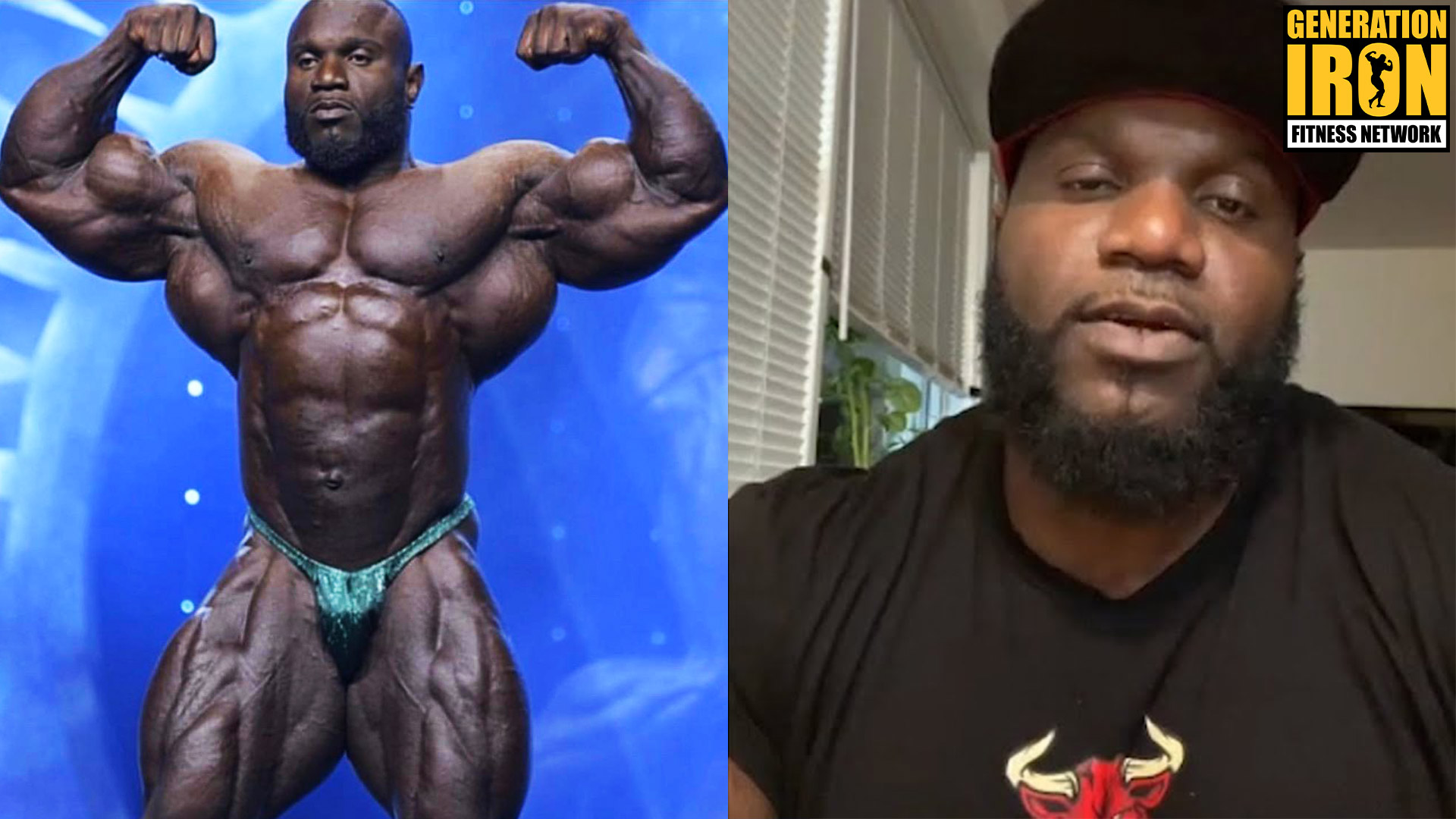
Akim Williams Full Interview | Underdog Status & Insanely Heavy Lifts
[embedded content]
Watch the full uncut GI Exclusive interview with Akim Williams
Akim Williams turned heads at the Olympia 2020 when he stepped onto stage and eventually landed sixth place. Williams is a massive bodybuilder with a lot of potential. That potential in past years seemed to never come to fruition. His previous Olympia placings were 9th in 2019 and 15th in 2016. Now many are considering him to be the biggest threat in 2021.
Akim is also known for being one of the heaviest lifters currently competing in bodybuilding. That’s why we connected with Akim Williams for a long form interview to discuss in-depth all things bodybuilding.
Over the past few months we’ve released multiple GI Exclusive segments from our interview with Akim Williams. Now we’re releasing the full length interview including topics such as his underdog status and becoming more of an Olympia threat, his heaviest lifts, and 90s bodybuilding vs today.
Listen To Our Akim Williams Interview On The Generation Iron Podcast
Our full length interviews are now also in podcast form! Subscribe to the Generation Iron Podcast for candid, full length interviews with the biggest names in bodybuilding, fitness, combat, and strength sports.
Listen to the full Akim Williams interview here:
On Being The Underdog And The Big Change That Improved His Physique In 2020
During our interview with Akim Williams, we asked him what it was like to be labeled with the underdog monicker. What is it like when fans and experts predict low placings? Williams admits that he tries not to let it bother him. In fact, he looks at the positive. Being the underdog means he can fly under the radar. That’s exactly what happened in 2020. No one expected a top six finish from Williams. When he stepped on stage, many were shocked. He was immediately in the running for standout of the weekend.
But these sorts of improvements don’t just happen out of thin air. What exactly changed to bring Akim Williams up to the next level? What was he working on while he flew under the radar? Williams says that the biggest factor was confidence.
Beyond the Mr. Olympia, Akim Williams placed well at the Chicago Pro and Arnold Classic. He also landed a high placing at the New York Pro in 2019. This gave him proof that he could achieve what he’s been striving for all these years. It gave him confidence in his own abilities.
Beyond that, Akim Williams also discusses how he put more training into presentation and posing. He worked extremely hard on improving his posing routine to showcase his physique in the best possible way. He credits that focus and dedication during prep to his higher placing this year.
And of course, his better placing this year only gives Akim Williams more confidence going in 2021. With the conversation now talking up Williams more than ever – he has all the tools he needs to bring his best package this year. We can’t wait to see what he comes up with.
On His Heaviest Lifts And The Accident That Almost Crushed Him
During our video interview, we wanted to reflect back to his heaviest lifts and how you build up the mentality to keep pushing further. He explained that each new personal record created a hunger to beat it again. It wasn’t something that happened over night. Nor was it full on ego lifting that could lead to too much stress on his body. It was gradual improvements. Breaking PRs inch by inch until suddenly he was throwing up insane amounts of weight.
Of course, just because he didn’t dive straight into ego lifts doesn’t mean that these huge lifts weren’t dangerous. Akim Williams describes one moment where he was almost crushed doing a massive lift. It was less due to the weight being too heavy. Instead, he misread the movement of his spotter. He thought the weight was racked when it wasn’t and then the weight nearly crushed him completely.
Luckily, Williams only got by with a scrape – but it was a wake up call for training moving forward. While building personal best lifts can be exciting and empowering, Akim Williams is also a pro bodybuilder first. If he injures his body, he loses time from becoming a champion.
The accident made him reflect on what he stands to lose and how lifting lighter weight can benefit him in the future. Not only from injury but also as a tactic to better hone his conditioning and physique.
Wrap Up
We discussed far more topics with Akim Williams than we can cover in one article. That’s why you should check out the full uncut GI Exclusive hour long interview above. It provides great insight into a bodybuilder that is poised to be a big threat in the coming years at Olympia. The time for sleeping on Akim Williams is over – we can’t wait to see what he’ll do next!
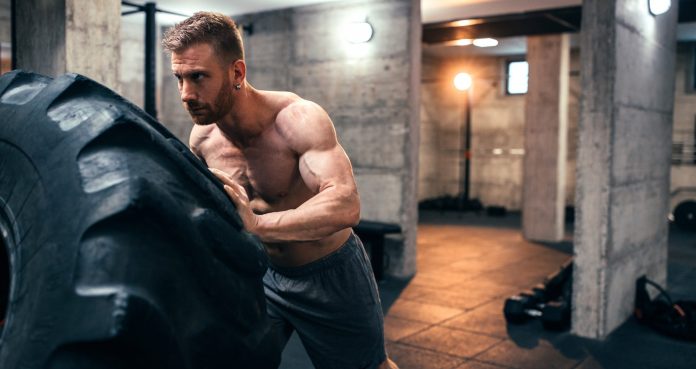
Benefits Of Circuit Style Training For Your Bodybuilding Goals
Circuit style training can improve all of your bodybuilding goals while saving you time for an efficient workout.
While we all love working out, sometimes our workout tend to be longer than we would like. The benefits of a good workout can get our energy up and improve our mindset while promoting positive gains, but dragging on a workout can be a burden on our already busy schedules. Circuit style training is one way to boost growth, get our metabolisms going, and save us time in the gym while still providing for a great workout.
Lifting big weights can also be incorporated into a circuit style workout, but of course that all depends on your goals. If you are going for max reps or sheer strength, then sticking with a few exercises to promote those big lifts is a must. But for those looking to shred and boost athletic performance, circuit style training is a great way to accomplish that.
What Is Circuit Training?
Circuit training is a style of workout performed with different exercises at a higher intensity and less rest between each station or exercise. This allows more muscle groups to be targeted as well as a way to elevate your heart rate to really get you working hard (1). Some people prefer a recovery that allows for proper rest, which could include stretching or simply catching your breath, while others prefer an active recovery, being lightly jogging in place or keeping your heart rate up with other forms of movements.
By working many multiple muscle groups, you will be able to have a longer workout. Switching off between two exercises can fatigue those muscles quickly, but circuit style training is something that can be done over a longer period of time with maximum gains while still providing a shorter time in the gym overall. The beauty of circuit style training is that it can be done in one long circuit, or broken up to target specific movements or muscle groups depending on your goals.
Benefits Of Circuit Training
Combine Strength & Cardio
Circuit style training allows you to combine heavy lifting with high intensity work to improve both strength and cardio. The constant movement will work to get those many muscle groups to failure while also promoting endurance building and an increased aerobic capacity (2). This can lead to an increase in overall athletic ability and functional movements for any sport, competition, or other training style. Putting in big lifts will keep you working on sheer strength and combining that with constant movement will only keep your heart rate high and your lungs fired up.
Boost Metabolism & Burn Fat
This can kickstart your metabolism into a serious fat burning machine. With an elevated heart rate, this exercise will work to really promote calorie burn resulting in you needing more energy to sustain in the workout (3). Relying on excess stores will get your metabolism going and burning through those stubborn fat stores so you see great results. Burning off that stubborn fat can lead to that desired shredded physique you work so hard for.
Promotes Time Efficiency & Effectiveness
By combining multiple exercises into a more intense, higher efficiency workout, you are able to save time in the gym and work to build more effective movements. While being in the gym is something we all love, for the feeling of bettering ourselves in amazing, it can be a burden on our busy lives. Work to eliminate all the excuses of working out by doing what you can to save time and maximize those gains.
Supports Full Body Workout Without Boredom
The monotony of working out can also be challenging and something we desperately want to avoid and circuit style training can offer a new full body workout that can eliminate any boredom that may arise. The great part about this style of training is that you can work your lower body and upper body to provide for great benefits all while keeping that heart rate elevated. Added bonuses like increased range of motion and flexibility will be enhanced by strengthening often times missed stabilizer muscles and a good stretching routine after your workout will only enhance that. Don’t let a boring workout cause you to just move through the motions and really work to promote gains with something new like circuit style training.
How To Design A Good Training Plan
Identifying your goals is the number one place to start. Knowing exactly what you want out of a workout can work to target specific areas of interest for your gains while keeping you engaged in forming that plan. Focusing on your strengths and weaknesses can also promote a solid understanding of what you need to develop further or areas you may need to improve. Once you have this nailed down, look into plans others promote and feel free to mix and match to see exactly what will work for you. You can always swap in and out to cause muscle confusion and to always have a new workout that keeps you having fun while making huge gains.
Wrap Up
Circuit style training is a great way to promote a full body workout while also saving time and allowing you freedom for other things you love. We all need a workout but it is important to make sure it fits with your lifestyle. The benefits of circuit style training will promote great gains to your strength and cardio while also working on shedding that unwanted fat to give you that desired physique you work so hard for. The bonus is that it is time efficient and can promote full body functionality. Look into adopting a good plan for you to see just how this can benefit your lifestyle and keep you from the boredom of the same old workout. You won’t be disappointed with the results!
Let us know what you think in the comments below. Also, be sure to follow Generation Iron on Facebook, Twitter, and Instagram.
*Images courtesy of Envato
References
Klika, Brett (2013). “High-Intensity Circuit Training Using Body Weight: Maximum Results With Minimal Investment”. (source)
Wilke, Jan; Kaiser, Stefanie; Niederer, Daniel; Kalo, Kristin; et al. (2018). “Effects of high-intensity functional circuit training on motor function and sport motivation in healthy, inactive adults”. (source)
Nunez, Tony P.; Amorim, Fabiano T.; Beltz, Nicholas M.; Mermier, Christine M.; et al. (2020). “Metabolic effects of two high-intensity circuit training protocols: Does sequence matter?”. (source)
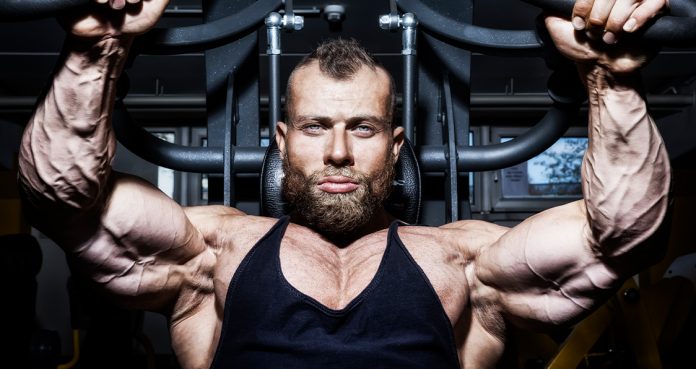
Train Your Inner Chest With This Unique Workout
A unique technique for building your inner chest.
When it comes to training the chest many beginners tackle the issue the wrong way. Some just hit the bench press over and over thinking that it’ll give them the size and definition they seek. Now, that’s not to say that the bench press is the wrong way to go, but it’s definitely not the only exercise you should be doing to build a well defined chest. Though the bench is definitely going to help, it won’t exactly do wonders for all the muscles in your pecs, particularly the inner chest.
We should take a moment to understand the importance of innovation. If we truly wish to develop ourselves into the absolute perfect form we must consider that doing things the same way over and over again can do a number of things. It can teach us to train our bodies in the correct way, giving us a firm foundation that will allow us to continue seeing results. It can also lend itself to restrictive thinking.
Mindset is an important aspect of proper training. If you’ve trained for long enough then you undoubtedly know of the concept of the mind-muscle connection. In order to activate specific muscle groups and get all the muscle fibers firing on all cylinders it’s imperative that we focus all of our mental capacity and attention on what’s being worked. Simply heading to the gym and thinking about the bench press as our sole method for chest training will automatically lead us down a dogmatic mindset, one that closes us off to the countless possibilities.
So if we’re talking about training the chest it can’t just be viewed as the massive slab of muscle that can only be activated in one particular way. Instead we must aim to look at the chest with a broader scope in mind. While we have the outer chest the determines the width of the pec muscle group, there is also the inner chest to consider in order to really bring everything together.
The inner chest is perhaps one of the harder parts of the pecs to develop. With most guys emphasizing building up the width and size of the pecs they often neglect building up the inner walls of the pecs. If a person contracts properly during a bench press or dumbbell flyes they should be able to isolate the tension through the mind muscle connection.
Why train inner chest separate?
So why exactly should we be aiming to train the inner chest in the first place? The reality is that hitting plateaus are all too common in bodybuilding. Every individual, specifically those who have been injured before, marry themselves to an idea, a specific way of training that has always worked for them. While there are some people who rarely have to worry about plateaus, the vast majority must face the reality that doing things the same way can only carry them so far.
Training the inner chest with specific, targeted exercises is only going to further help to bring your chest to the next level, which should always be your goal as a bodybuilder. Whether you’re a top bodybuilder or a novice looking to continue to grow your knowledge, by looking to try new methods of training it means you’re more willing to have an open mind.
There’s nothing worse then closing your mind off to the possibilities. Doing so can only mean doom in your continued journeys as a bodybuilder. If you’re willing to open you mind to one method, then it means you’re willing to open your mind to another. Experimentation after all is a major key to how bodybuilders have gained such success. Trial and error is no doubt a major component to ultimate success.
What method can be tried for better inner chest development?
So far we’ve spoken on the mindset portion of this training method, but not the actual method itself. Activating the inner chest isn’t something you can just do with some dumbbell flyes and call it a day. The requirement is that you’ll have to perform a unique movement that isolates the particular area you wish to grow.
For those looking to attack the inner chest exclusively then there’s an exercise that’s sure to shred the muscle group into shape.
Jeff Cavaliere of Athlean-X fame has gained a ton of popularity in the last several years. As a physical therapist and strength and conditioning coach for some of the greatest athletes in the world, Cavaliere is a man who has garnered a ton of respect in the fitness industry and highly sought after for his expertise.
Cavaliere is the just the kind of man who would sit, contemplate and analyze the chest muscle group to find the solution to a problem few individuals have the answer for. Rather than simply relying on science or experience alone, Cavaliere does his best to combine the two thought processes in order to create something truly unique.
Cavaliere has an exercise that is sure to get the inner chest looking well defined and in the kind of shape that any guy would dream to have. Take a look at Jeff’s unique approach to building up not only the inner chest, but the upper portion of the muscle group as well.
[embedded content]
What is the crossover shrug?
Essentially the crossover shrug works very similar to the dumbbell shrug used to train the traps. But like everything else, the devil is in the details and by rotating the dumbbell inward to activate the inner chest muscles and shrugging with the weight, the movement targets different pec muscle fibers than the regular shrug.
What are the benefits to training this way?
By using this unique method of training we’re able to see that the muscles in the chest can be attacked from different angles. This kind of additional work will likely aid in building up the entirety of the chest and not just simply the inner walls of the pecs.
How should you incorporate this method in your training?
It’s an exercise that can be used as supplementary movement on chest day. Rather than chest hitting flyes, dips, or bench for your chest, this movement can be used as an additional set to give that last bit of work to the muscle on chest day.
For the first few times utilizing this additional movement it would be wise to add in the crossover shrug as a superset to burnout the muscle. Performing one set of this movement on both sides would be ideal. As you become more advanced with the movement and your body begins to adapt, try adding in multiple supersets (either after the main movement or at the end of training) as a means to really punish the muscles into growth.
What’s your opinion on this unique exercise? Do you think it’ll get your pecs into top form?
For more news and updates, follow Generation Iron on Facebook, Twitter, and Instagram.
Managing Editor at Generation Iron, Jonathan Salmon is a writer, martial arts instructor, and geek culture enthusiast. Check out his Instagram, Twitter and Facebook to keep up with his antics.
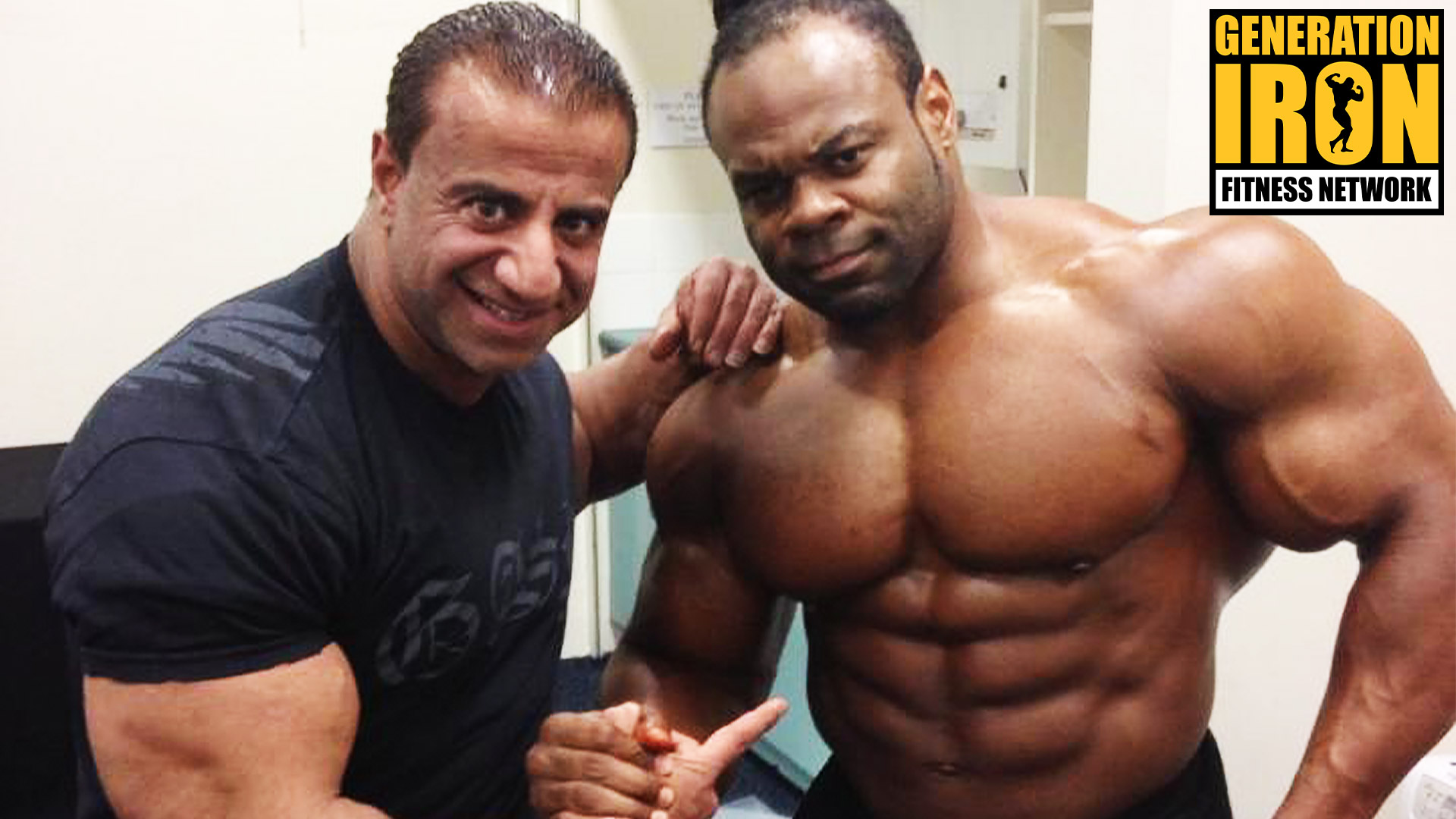
George Farah: Kai Greene Has Never, Ever, Ever Used Insulin
[embedded content]
George Farah uses Kai Greene as an example to debunk the recent myth that insulin is needed to build a top level mass monster physique.
Last week, we went into detail with George Farah about his thoughts on insulin use in bodybuilding. It’s a topic that he has spoken about before and only seems to have become more strongly against insulin a year later. In this new segment, we discuss further with Farah whether it’s possible to be healthy as a top level pro bodybuilder. Farah certainly thinks it does – and uses Kai Greene as an example. In our latest GI Exclusive, George Farah claims that Kai Greene has never used insulin to build his massive physique.
There is a persistent rumor in the world of bodybuilding regarding insulin. That rumor is many of the pros use this drug to further enhanced their physiques to the next level. This inspires younger bodybuilders to do the same – thinking it’s necessary to succeed at the top level of the sport.
George Farah couldn’t disagree with these rumors more. He is sternly against the use of insulin in bodybuilding. He also thinks it’s dangerous for coaches such as Milos Sarcev to promote them. In fact, Farah believes that it’s incorrect to assume pro bodybuilders must be unhealthy to succeed. It’s a bad thought he’s seeing trend in bodybuilding. It’s causing bodybuilders to make unhealthy decisions. He thinks it’s the reason we have seen so many bodybuilders pass away too soon.
George Farah is a legendary coach in the sport. He has trained many bodybuilders who have stood tall as top tier bodybuilders at the Mr. Olympia. Athletes like Branch Warren and Kai Greene. He uses his experience to definitely tell people today – abusing drugs and using insulin are not necessary. Why? Because these legendary greats he trained didn’t use insulin at all.
The entire topic gets George Farah very passionate. He loves bodybuilding. And he loves the people in bodybuilding. He hates to see them make choices that they can’t take back years down the road.
“You’re gonna tell me Kai’s not a freak? I can put my hand on anything you want and swear to you that Kai never touched insulin,” George Farah states in our interview. He goes on:
“As long as I’ve known him. We’ve been eleven years together. Never, ever, ever. Do you understand what I’m saying? He’s walking around 300 pounds shredded. So you’re not going to duplicate this because you don’t have the genetics or you don’t have the heart or work ethic. Like Branch or all of these guys. Branch used to have no genetics but he proved to everybody hard work can make it. Guess what? Branch never used insulin. Never. Never!”
If you watch George Farah in our interview above – you can see how fired up he’s getting about this. In his later years, Farah has become increasingly more focused on health in bodybuilding. After a cancer scare that he survived and recovered from – he’s seen life through a different lens. You only live once. Bodybuilding is not worth dying over.
You can watch George Farah go into full detail about health in bodybuilding by watching our latest GI Exclusive interview segment above!
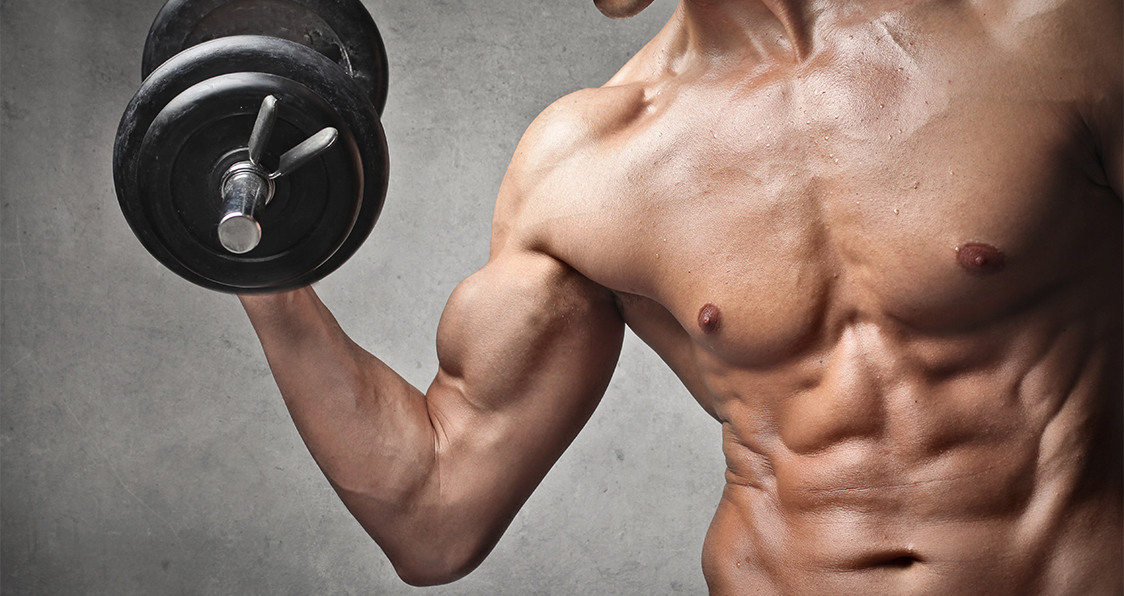
How To Increase The Time Under Tension To Maximize Your Gains
Increase The Time Under Tension With These Steps
Time under tension (or TuT) plays a vital role in muscle development. As the name suggests, TuT is the amount of time your muscle is put under tension while performing resistance exercises.
Your muscle tissues break while you lift weights and increasing the time under tension can add to the effect as the challenge for the muscles under focus increases. An increase in TuT can set the ground for your muscles to recover stronger, bigger and better.
Change the Rep Tempo
One of the most effective ways to increase the time under tension and annihilate your muscles is to change the rep tempo. For example, if you take one second to lower the dumbbell, one second to curl, and no rest at top and bottom while performing a dumbbell bicep curl, you are spending almost 3-4 seconds while completing a repetition.
You can modify the rep tempo by taking three seconds to lower, two to lift, and one second of rest each at the top and the bottom of the repetition. By the end of the exercise, your muscles will be under tension for 7-8 seconds as compared to the 3-4 seconds mentioned above. Your muscles will be asking you for mercy by the end of the set.
Increase The Number of Repetitions
There is more than one way to skin the cat when it comes to changing the time under tension while resistance training. Increasing the number of repetitions in every exercise you perform is another popular way of making the muscles do more work.
Increasing the TuT will help you in establishing a better mind-muscle connection. Don’t be surprised if you get the best pump of your life as you increase the TuT. Your muscles will be filled with blood and lactic acid as you add to the load on your muscles with the techniques mentioned in the article.
Hold the Rep at Top and Bottom
Holding the reps at the top and bottom of the movement can be a great way of increasing the time under tension and amplifying the muscle pumps. As you pause at the top and bottom, you should squeeze the living hell out of your muscles.
Make sure you don’t convert the pause into rest by overstaying your welcome. You should pause at the top and bottom for not more than two seconds. The purpose of the hold is to increase the TuT and not to give your muscles relief.
Use Advanced Training Techniques
Almost all the advanced training techniques increase the time under tension. The increased TuT is also a reason you get the muscle-ripping pumps while performing one of the advanced training techniques.
Some of the techniques you can try to increase the time under tension are rest-pause sets, intraset stretching, drop sets, forced reps, and negatives. You’ll need a spotter on exercises with forced reps and negatives and it’s important you practice safe measure while performing these sets as a small mistake can lead to an injury.
Follow a full range of motion while performing all the exercises and focus on contracting your muscles with every rep to make the most of your workouts. Don’t rush through the exercises as the pump gets intense. Work with the pain and hit your exercises to complete muscle failure.
Header image courtesy of Envato Elements
Do you use supplements? Let us know in the comments below. Also, be sure to follow Generation Iron on Facebook and Twitter.
